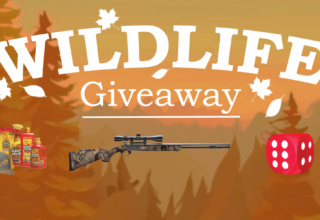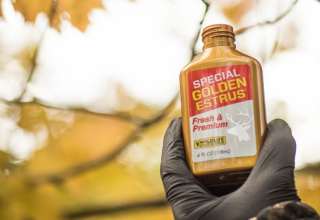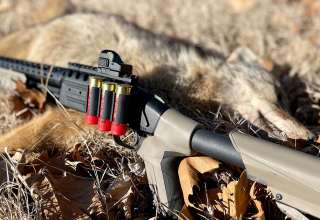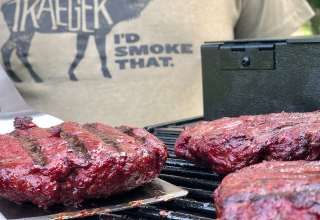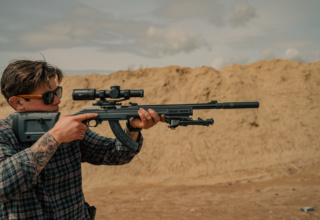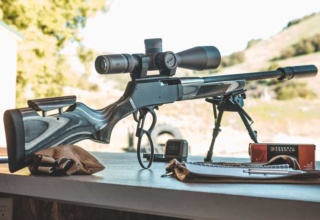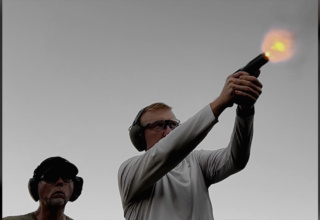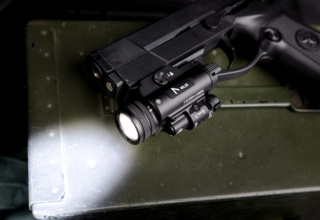Every year as deer season begins to loom on the horizon, my excitement level begins to build. This building of anticipation usually starts to occur sometime throughout the summer as I start with feeding minerals, planting food plots and scouting by hanging multiple game cameras. As September arrives, I am excited to be bowhunting. Mid October rolls around and I am excited because the pre-rut activity that consists of bucks becoming active is increasing daily. My excitement continues as the shift towards the rut being in full swing begins and the annual tradition of firearms season starts.
 However, for some reason, after that mid November adrenaline rush, I seem to lose that excitement level which results in my interest turning toward predator hunting instead. This loss of motivation is due to being “burnt out” over anything pertaining to deer. I attribute it to going full throttle over the previous months leading up to December, even though I absolutely loved everything about deer hunting before this point. For 4 months I seem to go full speed with all focus going on deer hunting.
However, for some reason, after that mid November adrenaline rush, I seem to lose that excitement level which results in my interest turning toward predator hunting instead. This loss of motivation is due to being “burnt out” over anything pertaining to deer. I attribute it to going full throttle over the previous months leading up to December, even though I absolutely loved everything about deer hunting before this point. For 4 months I seem to go full speed with all focus going on deer hunting.
Another reason that I tend to lose interest around this time of year is due to having the mindset that I have had for years – that the hunting just isn’t as good. The rut is over, deer stop moving and honestly, it isn’t worth it. This state of mind held true, until a few years ago when I discovered that if one will take a break for a couple of weeks to recharge, there is a lot of great deer hunting to be done late season, and it basically all centers around food.
Food for Survival
 After the rut is over, deer go back to a survival instinct mode. As humans we know that winter is coming, so we start preparing. We bring in wood for heat, or fill up with propane, then we will winterize everything so that we can stay warm. We also tend to have a stock of food at easy access. The same goes for a whitetail deer, they begin packing on pounds to stay warm throughout the winter. They do this by feeding on high-carb foods such as corn and soybeans, which is why sitting in food sources can result in encountering a high number of deer. Being from southern Missouri, I do not have access to crop fields such as corn and soybeans. Instead hunters have to plant food plots that deer like during late season such as turnips. This is because after the ground freezes a couple of times the turnips become sweeter resulting in an irresistible indulgence for hungry whitetails.
After the rut is over, deer go back to a survival instinct mode. As humans we know that winter is coming, so we start preparing. We bring in wood for heat, or fill up with propane, then we will winterize everything so that we can stay warm. We also tend to have a stock of food at easy access. The same goes for a whitetail deer, they begin packing on pounds to stay warm throughout the winter. They do this by feeding on high-carb foods such as corn and soybeans, which is why sitting in food sources can result in encountering a high number of deer. Being from southern Missouri, I do not have access to crop fields such as corn and soybeans. Instead hunters have to plant food plots that deer like during late season such as turnips. This is because after the ground freezes a couple of times the turnips become sweeter resulting in an irresistible indulgence for hungry whitetails.
Besides seeing a lot deer in general, hunting food sources during the late season can result in seeing mature bucks as well. We, as hunters, know how it feels when checking game cameras early season, and several mature bucks seem to be showing themselves, only to lose sight of them for a month or two. This is mainly because they leave the area for breeding purposes, bucks will occasionally relocate to an area with less competition and/or more does. I have noticed by using my Stealth Cam DS4K that those same mature bucks seem to reappear during the late season in search of, you guessed it, food.
Second Rut
Other than coming back to the food sources, another great reason to hunt these areas for mature bucks is because of the second rut. The second rut is for fawns or does that didn’t come into estrus during the first rut. It occurs approximately 28 days after the peak rut occurs. For example, if the rut was in mid November, the second rut will be sometime in mid December. When mature bucks seek out one of these does that have come into estrus, one of the best places to find them is going to be where the main food source is. During this time, deer are in more of a survival mode than they were in mid November, thus making it easier for the hunter to come across a buck without having to cover such a broad area as with the 1st rut. Once again, this makes a food source the place to be.
Be Prepared For The Cold
 Late season hunting can be a little more challenging due to the dropping temperatures, especially when a cold front has come through. When this happens, longer sits in the stand are more likely, as hunting becomes more of a waiting game. If hunting on the ground or out of a treestand, I will wear good insulated clothing and warm boots such as Danner’s High Grounds.
Late season hunting can be a little more challenging due to the dropping temperatures, especially when a cold front has come through. When this happens, longer sits in the stand are more likely, as hunting becomes more of a waiting game. If hunting on the ground or out of a treestand, I will wear good insulated clothing and warm boots such as Danner’s High Grounds.
A good pair of boots and clothing will allow you to show more patience in the cold. Another option for cold and long hunts is to hunt out of an enclosed blind. Many late season hunters prefer this method because it has the perk of keeping the hunter out of the wind, with the option of using a portable heater to stay warm.
 The last thing hunters have to consider when hunting food sources in the late season is masking human scent. As previously stated, late season food sources can hold a lot of deer at one time, meaning a lot of strong noses are in one place and those noses can make or break the hunt. When hunting out of a blind or tree stand, I always do a complete scent elimination regimen that includes showering before the hunt with Scent Killer Gold Body Wash and Shampoo, then I spray all of my gear as well as myself with a good dose of Scent Killer Gold Spray. This allows me to sit with several deer in front of me without being busted. If hunting in a enclosed blind, aka a box blind, I will do the same scent elimination steps added with the aid of an Ozone generator such as Scent Lok’s OZ Radial 400B, this will mask any other odors from inside the blind, even the smells coming from a portable heater. With the combination of the two a hunter can stay hidden from a large number of deer and their noses.
The last thing hunters have to consider when hunting food sources in the late season is masking human scent. As previously stated, late season food sources can hold a lot of deer at one time, meaning a lot of strong noses are in one place and those noses can make or break the hunt. When hunting out of a blind or tree stand, I always do a complete scent elimination regimen that includes showering before the hunt with Scent Killer Gold Body Wash and Shampoo, then I spray all of my gear as well as myself with a good dose of Scent Killer Gold Spray. This allows me to sit with several deer in front of me without being busted. If hunting in a enclosed blind, aka a box blind, I will do the same scent elimination steps added with the aid of an Ozone generator such as Scent Lok’s OZ Radial 400B, this will mask any other odors from inside the blind, even the smells coming from a portable heater. With the combination of the two a hunter can stay hidden from a large number of deer and their noses.
Finding a well used food source during the late season, whether one is bow, crossbow, rifle or muzzleloader hunting, can result in an entertaining time. It can also provide some great mature buck action that is sure to rejuvenate a hunters enthusiasm for deer hunting, that otherwise could have hit a lull, as I used to. However, after hunting late season, I have the excitement level throughout the entire year, and that kind of passion is what we as hunters live for.


